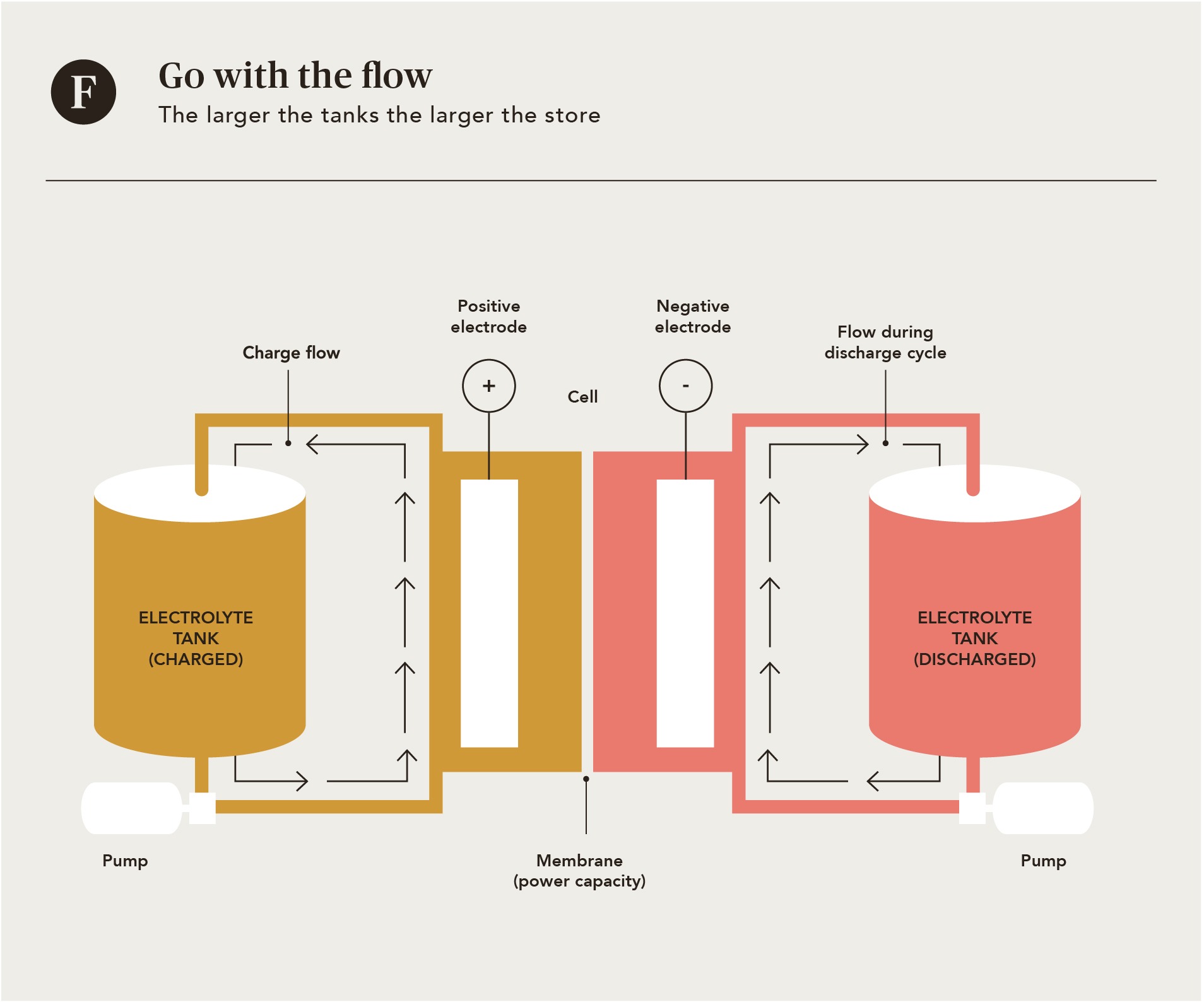LI-ION NOT ALONE
No battery is yet capable of affordably storing and releasing significant volumes of electricity. Lithium-ion batteries are sufficiently mature to have developed a competitive edge for some uses, but flow batteries hold greater potential for meeting expectations for grid scale storage, should their cost and technical challenges be overcome. Other lithium based technologies are being intensively explored
.Research into better batteries is fast and furious. Existing batteries with potential to play a role in boosting the resilience and reliability of future power systems are hampered by one or more of a number of challenges, including insufficient life spans, lack of capacity, reliance on scarce raw materials and an unfortunate tendency to burst into flames.
The battery storage market’s most successful rechargeable products so far are based on lithium-ion technology, in which an electricity charge contained in lithium-ions moves from one electrode to another. During charging the ions move one way and during discharge they change direction.
The difference between the various types of li-ion batteries primarily lies in the material used for the positive electrode (the cathode). Most development work has been in this area. Lithium-ion batteries have been on the market since 1991 and are widely used in electronic equipment, from mobile phones to electric vehicles. Compared with other battery types, they have greater energy density, are lighter, do not require much maintenance and work well at room temperature, all of which gives them a competitive edge through price and convenience advantages.
On the downside, lithium-ion batteries are reliant on metals in short supply (read more about li-ion here). They can also overheat and risk exploding if not properly designed, as Samsung discovered to its cost when a newly released mobile phone demonstrated explosive behaviour once sold to customers, forcing a general recall of the model.
….
NEW TECHNOLOGIES
But li-ion batteries are far from the only battery technology being further developed, says George Crabtree of the Illinois-Chicago university and energy storage research director at the United States Argonne National Laboratory.
“The most promising new technologies beyond li-ion are lithium-sulfur, lithium-air, magnesium batteries and flow batteries. Of these, lithium-sulfur has the shortest time horizon, magnesium batteries next, and lithium-air batteries the farthest out,” says Crabtree, who sees good potential in flow batteries.
Lithium-sulfur battery technology is challenged by a relatively short life cycle and for this reason is not an obvious replacement for lithium-ion batteries in stationary applications, says Tejs Vegge from the energy storage department at Denmark’s Technical University. He includes rechargeable zinc-air batteries on the list of challengers to lithium-ion. Like Crabtree, he believes the scalability of flow batteries makes them a strong contender for application in power systems.
A flow battery stores energy in tanks of liquid chemicals (electrolytes), with separate tanks for charged and spent electrolytes separated by a membrane. The larger the tank, the greater the store. Modern flow batteries are also durable and capable of a relatively high number of charge and discharge cycles before losing their storage ability.
The most advanced type of flow battery employs metal in the form of vanadium-ions in the chemical storage medium. In China a 200 MW vanadium-flow battery able to deliver 800 MWh of electricity is being installed on the Dalian peninsula to assist with stabilising the region’s grid network.
..  ..
..
ORGANIC FLOW BATTERIES
“Vanadium-flow batteries are incredibly durable and can withstand over 100,000 cycles. But they are also very expensive, not least because of the vanadium content used to store the energy,” says Vegge. “We’re looking at new types of flow battery based on organic chemicals and that technology has seen recent advances. The price of organic connections is much lower than for vanadium and organic flow batteries would be able to compete with li-ion. At the moment, however, the challenge is their short life expectancy. It’s difficult to boost it,” says Vegge.
Crabtree adds: “Organic flow batteries have the most promise, because they can be made of inexpensive and earth-abundant elements such as carbon, oxygen, nitrogen and hydrogen, can be recycled and offer enormous design diversity. But li-ion batteries will remain the dominant battery for the next decade or more.” •
….
TEXT Henrik Bendix